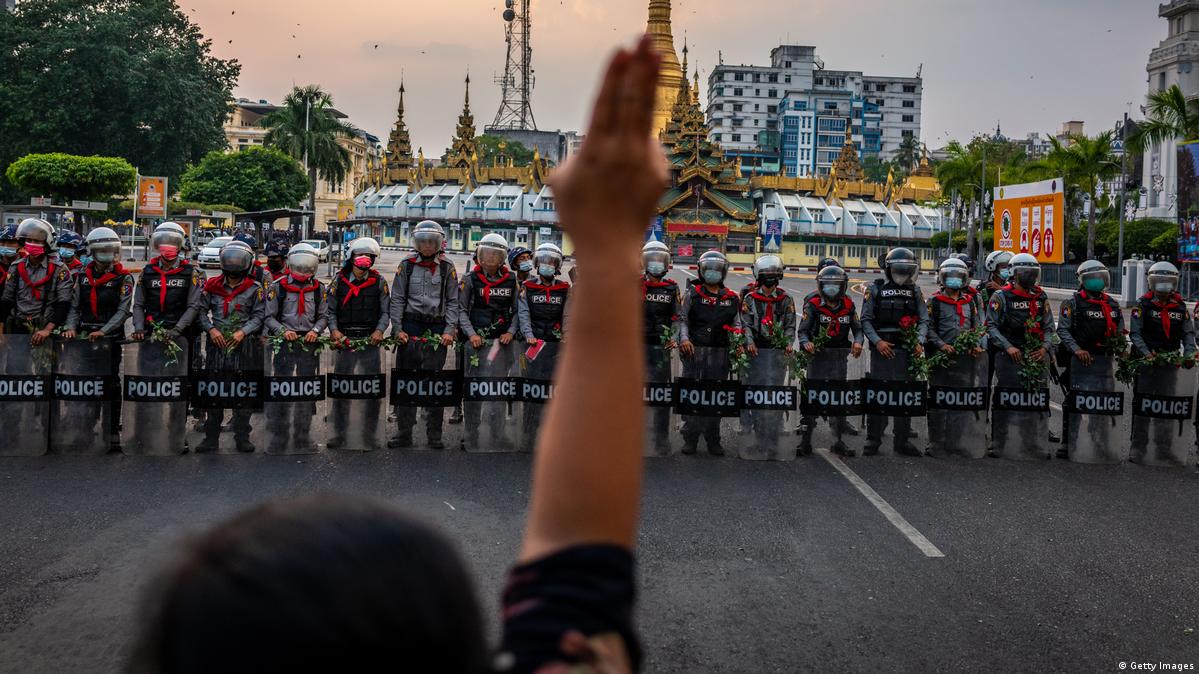Myanmar’s Upcoming Elections
December 8, 2025 After several years of violent conflict and severe rule, Myanmar’s governing military junta, which overthrew the democratically elected government in 2021, is holding elections on December 28,


December 8, 2025 After several years of violent conflict and severe rule, Myanmar’s governing military junta, which overthrew the democratically elected government in 2021, is holding elections on December 28,
November 20, 2025 Ambassador Joseph DeTrani served as the U.S. Representative to the Korea Energy Development Organization (KEDO), as well as former CIA director of East Asia Operations. He also
Civil unrest remains violent in Myanmar, as 23 people were killed in an airstrike on a Buddhist monastery in Lin Ta Lu village. The Karen National Liberation Army (KNLA) and
The junta said a recent earthquake destroyed almost 10,000 religious buildings in the country. By RFA Burmese 2025.04.14 Myanmar’s junta bombed a monastery in the country’s northwest on Saturday, killing five
Myanmar junta airstrikes on civilians in Sagaing Region and Chin State on Wednesday reportedly killed over 30 people. The regime has repeatedly attacked civilian and resistance targets since it declared
The powerful 7.7 magnitude quake struck at around 12.50pm local time (6.20am UK time) near the second-biggest city Mandalay on Friday. Sky News – March 31, 2025Link to the original
Associated Press, DAVID RISING, THEIN ZAW and GRANT PECK – March 30, 2025Link to the original article. MANDALAY, Myanmar (AP) — The smell of decaying bodies permeated the streets of
BBC, Rebecca Henschke – March 29, 2025Link to the original article. Myanmar’s military junta has continued to bomb parts of the war-torn country following the major earthquake there, which has
Olivia Le Poidevin, Reuters – March 17, 2025Link to the original article. GENEVA, March 17 (Reuters) – U.S. cuts to humanitarian aid are having a crushing impact on people in
The drones from China and Russia are fitted with infrared cameras, allowing them to attack at night. RFA Burmese – March 15, 2025Link to the original article. A Chinese-made high-tech
Forced displacement represents one of the most pressing humanitarian issues of our time. Individuals and families, torn from the fabric of their communities, find themselves navigating a world of uncertainty, often without basic necessities or a clear path to safety. There are currently some 110 million forced displaced, and this number is growing by 10 million each year!
At the heart of this crisis are the political triggers. Armed conflicts, ethnic or religious persecutions, and systemic human rights abuses force millions to flee their homes in terror. Many are displaced within their own national boundaries, while others seek asylum abroad. If these factors change as a result of political shifts at home or the pressures from abroad, they can return to their homes. Forced displacement is thus different from environmentally driven displacement, as victims of climate change may never be able to return to their homes.
The ramifications of any sort of displacement are profound, not just for those directly affected, but also for host communities and countries. Overburdened infrastructures, socio-economic strains, and cultural tensions can arise, necessitating comprehensive strategies to foster harmony and integration. Yet the root causes of forced displacement can be remedied with a concerted focus by local players and international diplomacy.
Organizations like Refugees International play a crucial role in this arena, advocating for the rights and needs of the displaced, conducting on-the-ground assessments, and influencing policymakers to take informed actions. Their relentless work underscores the gravity of the situation and the urgency ofinternational cooperation. But they, too, are overwhelmed by the rapid expansion of the crisis.
International Humanitarian Law (IHL), with its core principles centered on the protection of civilians during conflicts, plays a pivotal role in this discourse. Yet, despite clear legal frameworks, compliance remains
inconsistent. This initiative emphasizes the importance of upholding and reinforcing these international standards.
It’s not just about recognizing the problem; it’s about active engagement. We urge governments, organizations, and individuals to prioritize the rights and needs of the forced displaced. Through collective efforts, informed policies, and sustained advocacy, we can shift the narrative from passive acknowledgment to proactive intervention.